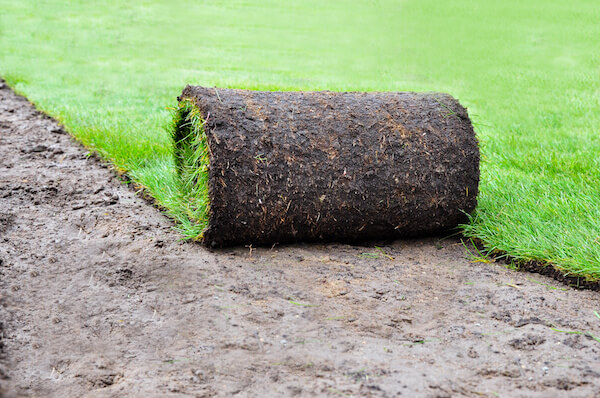
Will Your St. Augustine Grass Fall to Chinch Bugs?
Southern chinch bugs love St. Augustine lawns. While they will feed on other cultivars from time to time, their favorite food happens to be the most popular type of grass grown in Florida. If you manage a St. Augustinegrass lawn, whether professionally or at home, you may wonder if it’s just a matter of time before your turf succumbs to an infestation. However, as long as you follow best practices for your St. Augustine variety, it can conquer the ever-present chinch bug threat.
What Conditions Do Chinch Bugs Like?
Chinch bugs, working in a crowd, suck fluids from crown and stem of grass plants. The result appears very much like drought stress, brown patches throughout the lawn. In fact, an infestation can be mistaken for drought stress, thereby delaying treatment and even contributing to the conditions the pests favor. They thrive in the following situations:
Thatch
Chinch bugs love the cover of a thick thatch. It hides them from predators and provides a nice, moist environment in which nymphs can feed in peace.
Sun
The adults also enjoy sunny, warm and drought-dried areas. They’ll avoid the shade. Often, an attack begins at the edges of sidewalks and spreads into the lawn from there.
Sick Turf
Poor cultivation habits that weaken the grass offer the perfect invitation to a roving hoard of chinch bugs. Healthy lawns act to resist devastation naturally. But mistakes in care can bring it on full-scale.
Cultural Control: The First Step in Chinch Bug Resistance
With proper cultivation practices, St. Augustine species thrive in Florida’s hot, humid climate. They propagate quickly, tolerate some shade and generally civilize our urban areas. You want to avoid mismanagement, therefore, learn how to properly water, mow and feed as your best defense against all pests, weeds, and fungi.
Irrigating
Overwatering prevents sod from utilizing moisture to its benefit. It needs to dry between irrigation and/or rain events. Long experience teaches that by giving the turf about an inch of water once a week fosters deep root growth while allowing enough time to dry out.
But make sure the lawn receives enough water, too. It can be a delicate balance. If you notice that the blades are fading to a grayish color and your footfall fails to recover quickly, then go ahead and give the lawn a drink. While chinch bugs hate a wet environment, overwatering defeats the purpose of cultural control.
Cutting
St. Augustinegrass blade height should be kept between three and four inches for best root development. Cutting lower to stretch out the mowing intervals will stress the blades and interfere with critical photosynthesis. Never mow more than one-third the blade length at any given time, and always use a sharp blade.
Feeding
Fertilizing St. Augustine turf judiciously can make all the difference. Although it’s tempting to throw on a lot of nitrogen to force fast, green growth, in the end, too much ceases to nourish and begins to harm the lawn. Try to use organic fertilizers instead, and use them sparingly throughout the growing season.
Integrated Pest Management
Because chinch bugs have begun to adapt to Floratam St. Augustine cultivars — bred to resist chinch bugs — and tend to develop a tolerance to synthetic insecticides, the best offense against an infestation requires multiple fronts.
Insecticidal Soap
Many organic gardening shops sell insecticidal soap products which, if used per the directions, can reduce chinch bug populations down to tolerable levels. Not recommended are homemade soap treatments since they can have deleterious effects on the grass, surrounding vegetation and some beneficial insects.
De-thatch
Power raking and aerating at least once annually to prevent thatch build-up deprives chinch bugs of a cozy home. If cultural practices are followed, thatch shouldn’t accumulate much, anyway.
Big-Eyed Bugs (Geocoris punctipes)
Don’t forget to introduce chinch bugs’ worst enemy, their cousins the big-eyed bugs. Big-eyed bugs are also a species of chinch bugs, but they feed on southern chinch bugs instead of grass. While not as voracious in appetite as you may prefer, they will contribute to eradicating the chinch bug infection.
You can avoid chinch bug infection on your St. Augustine grass by following the sound principles of integrated pest management and cultural control.